Blog
Everything You Need to Know About Tulip Poplar Tree: An Elegant Giant for Your Landscape
If you’ve ever dreamed of having a tree that makes a statement in your garden, the Tulip Poplar tree is the one to consider. It’s not just any tree; it’s a majestic giant that can grow up to 150 feet tall, filling your yard with beauty, shade, and a rich history. From its vibrant spring flowers to the golden glow of its fall leaves, the Tulip Poplar offers something special in every season. It’s a perfect addition for gardeners who want to enjoy a tree that’s not only striking but also supports local wildlife and adds a touch of nature’s history to their landscape.
Tulip Poplar’s Unique Beauty: From Spring Blooms to Autumn Glory
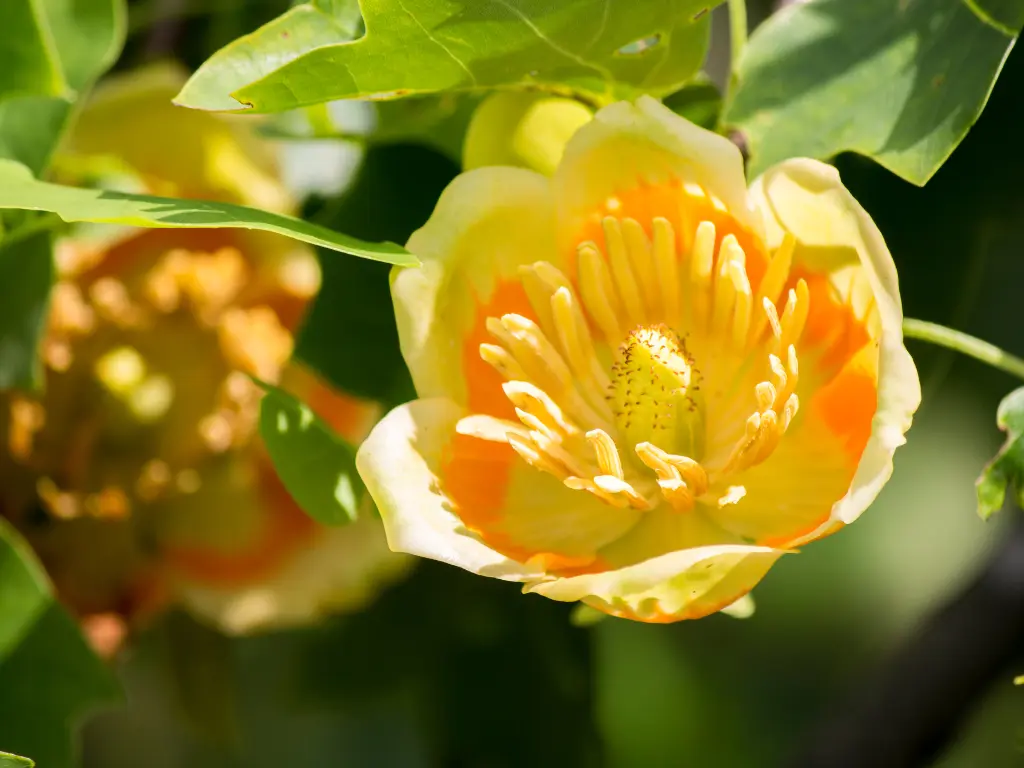
The Tulip Poplar Tree, scientifically known as Liriodendron tulipifera, is a deciduous tree native to North America.
The Tulip Poplar is famous for its stunning tulip-shaped flowers, which bloom in early spring. These Tulip Poplar flowers are a beautiful combination of yellow, green, and orange colors that stand out against the early spring foliage. The flowers themselves may not have a strong scent, but their colors are enough to catch the eye and make a bold statement in your yard.
But this tree isn’t just about pretty flowers—its stunning form, impressive height, and vibrant green foliage make it a stand-out feature in any yard. With the potential to grow up to 100 feet tall, the Tulip Poplar is considered one of the tallest trees in eastern North America. This makes it ideal for large yards, estates, or even parks, where its size and beauty can truly shine.
As the warm summer months roll in, the Tulip Poplar’s lush green leaves take center stage, offering much-needed shade from the sun. If you’re looking for a natural shade provider, this tree has you covered. The broad canopy of leaves not only cools your yard but also creates a peaceful, serene atmosphere where you can relax and enjoy your garden.
Then, as fall approaches, the magic of the Tulip Poplar continues. Tulip Poplar leaves turn a rich golden yellow, a sight that’s sure to bring a smile to any gardener. The tree becomes a golden beacon in the landscape, standing out in a sea of fall foliage. Even as the leaves fall and the tree prepares for winter, there’s still beauty to be found. The bare branches become sculptures against the winter sky, offering a different kind of elegance and charm.
But beyond its seasonal beauty, the Tulip Poplar flower is also a vital tree for pollinators. The blooms in spring are a source of nectar for bees, butterflies, and other pollinators, which makes it an essential part of any eco-friendly garden.
Why Tulip Poplar? A Tree with Ancient Roots and Generational Beauty
The Tulip Poplar isn’t just a beautiful tree—it’s a piece of history. This tree has been around for millions of years, with fossil records dating back to the Cretaceous period. Imagine that: a tree that lived during the time of the dinosaurs, still standing strong in our modern landscapes. That’s the kind of tree the Tulip Poplar is—one that links us to the past while enriching our gardens today.
Not only does the Tulip Poplar have historical significance, but it also lives a long, prosperous life. These trees can live for over 200 years, meaning that your Tulip Poplar could be a cherished part of your yard for generations to come. It’s a tree that grows with you, offering beauty and shade year after year.
How It Transforms with the Seasons
This tree is a true four-season wonder, offering something to admire year-round. Here’s how it changes with the seasons:
-
Spring: The Tulip Poplar bursts into bloom with its yellow-green tulip-shaped flowers. These blooms are a sight to behold, high up in the tree canopy, and provide an early source of nectar for bees and butterflies.
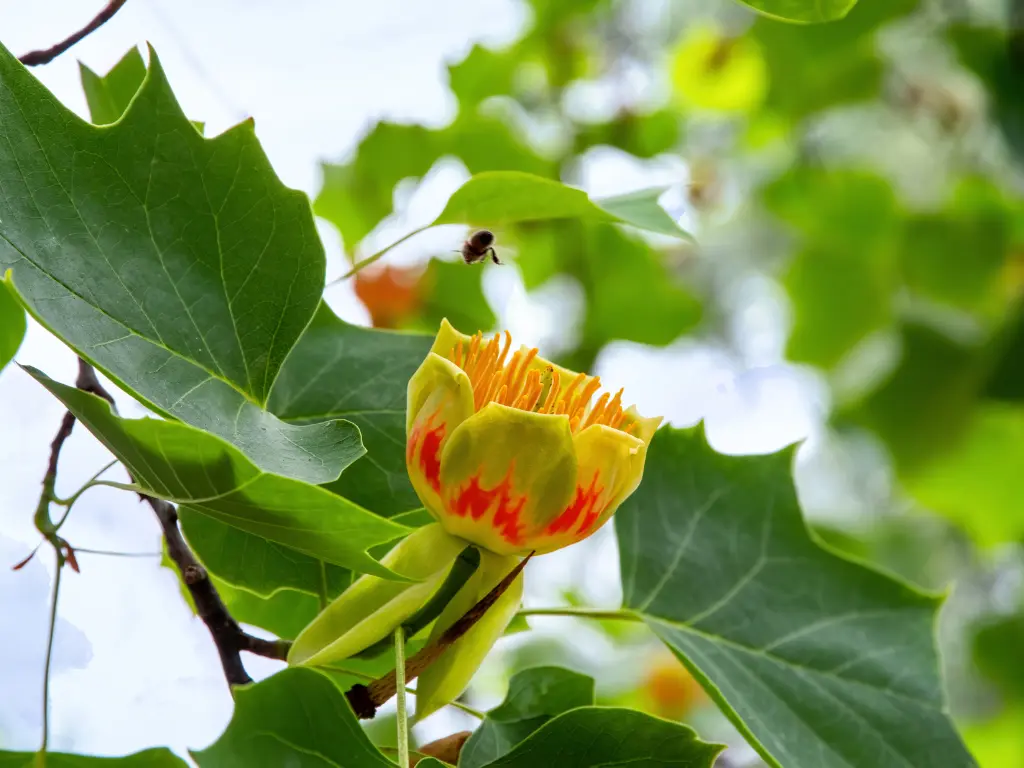
-
Summer: As the flowers fall, the tree’s broad leaves remain, providing much-needed shade during the hot summer months. The Tulip Poplar becomes a cool retreat from the heat, making it a perfect spot for a hammock or garden bench.
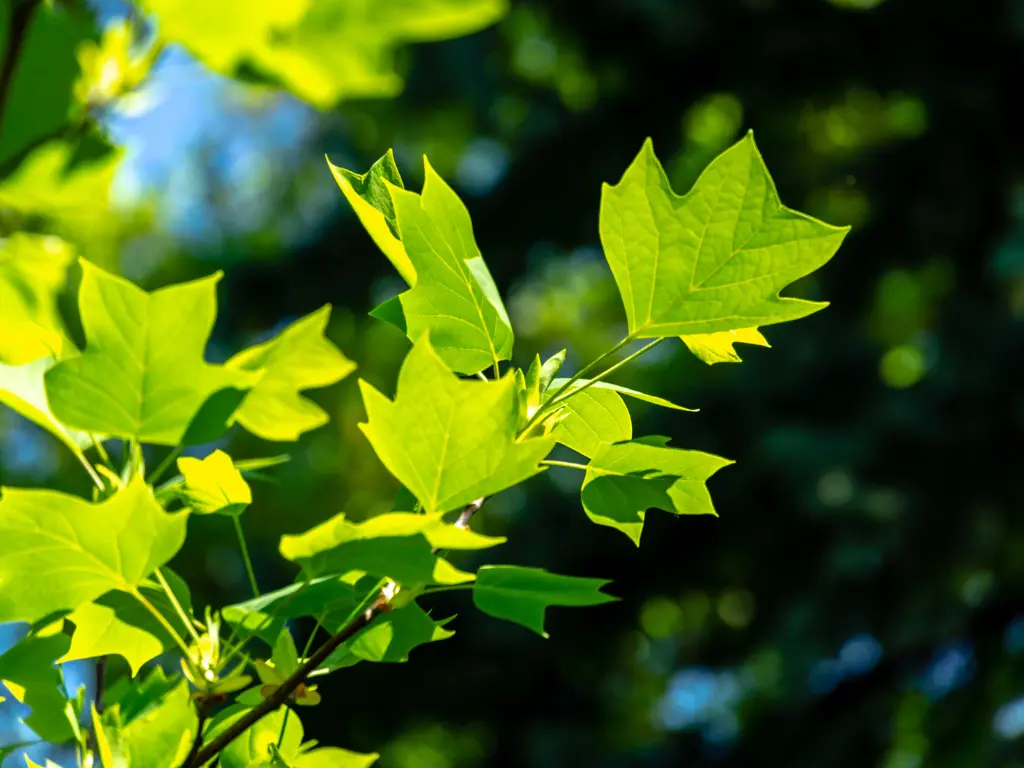
-
Fall: As the weather cools, Tulip Poplar leaves transform into a brilliant golden yellow, adding a splash of color to the autumn landscape. It’s like the tree is celebrating the changing seasons with a vibrant display.
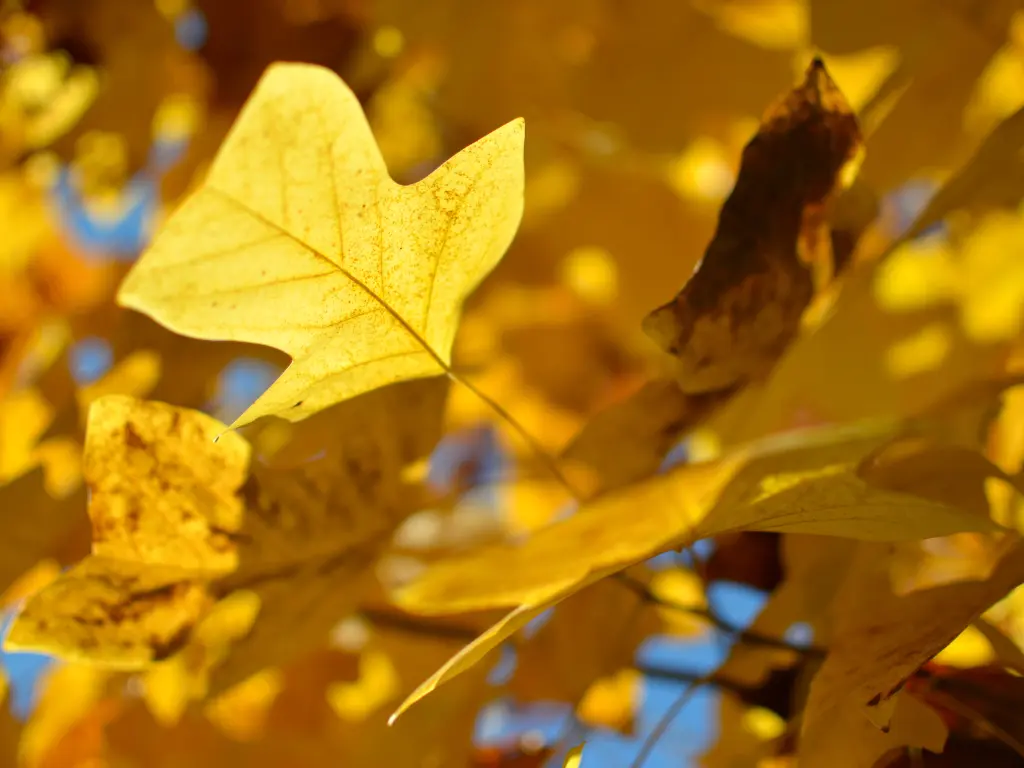
-
Winter: Even when the tree is bare, it’s still a work of art. The twisted branches of the Tulip Poplar become sculptures against the winter sky, with the tree standing tall and proud in your garden. It’s a reminder that beauty can be found in every season, even the coldest ones.
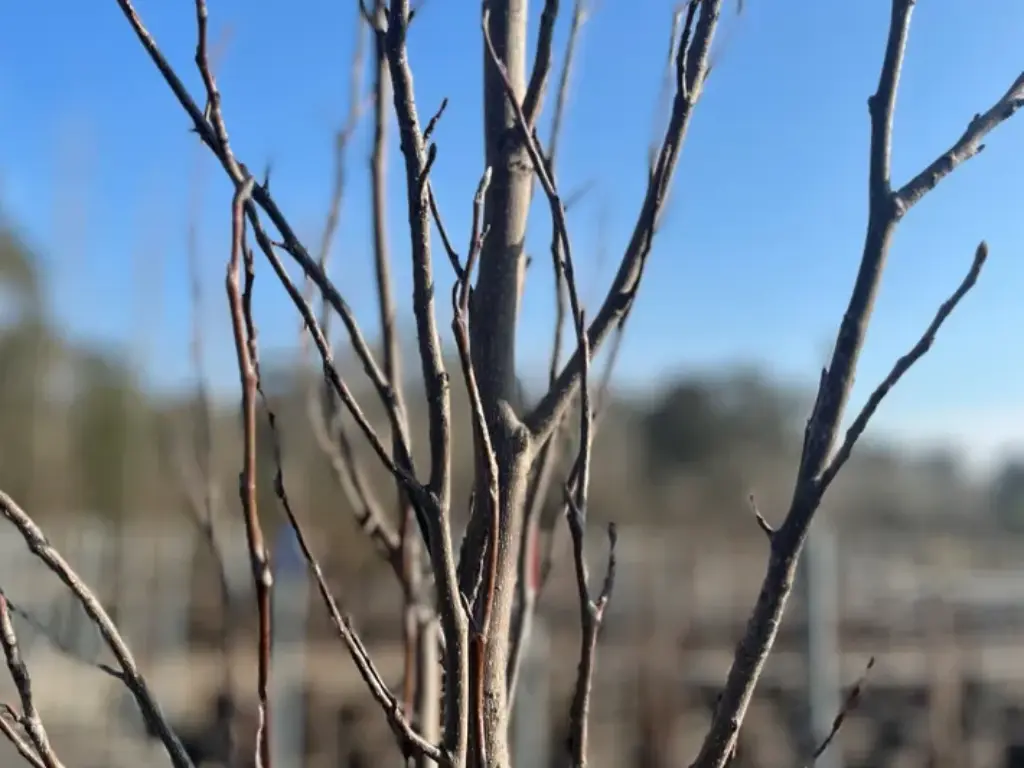
Tulip Poplar Tree Care
If you’re ready to bring a Tulip Poplar tree into your garden, there are a few things to keep in mind. First, this is a tree that requires space. Tulip Poplars can grow to heights of 150 feet, so make sure you have enough room for it to spread out and reach its full potential. It’s important to choose a spot with plenty of sunlight—either full sun or partial sun will do. The tree also needs well-draining soil, so be sure to plant it in a spot that won’t become waterlogged.
One thing to note is that Tulip Poplars don’t thrive in compacted soil or near salt spray. If you’re planting near a road, be cautious, as the salt from the road can harm the tree. Additionally, while Tulip Poplars are known for their hardiness, they do best when planted in their ideal growing conditions.
Where to Find a Tulip Poplar Tree
Finding a Tulip Poplar may not be as simple as visiting your local garden center. Since it’s a native tree, you might need to do a bit of research to find one in your area. Fortunately, Nursery Plants offers a variety of stunning Tulip Poplars for your garden. Click here to explore and buy one now!
Why Tulip Poplars Should Be the Star of Your Yard
The Tulip Poplar is a tree that deserves to be the centerpiece of your landscape. With its majestic height, stunning seasonal displays, and historical significance, it’s a tree that will leave a lasting impression on anyone who sees it. Whether you’re looking for a tree that provides shade, beauty, or a piece of history, the Tulip Poplar has it all. Plant one in your yard and watch as it transforms your garden into a vibrant, living work of art.
Pairing Tulip Poplars with Other Plants
The Tulip Poplar pairs well with other plants that thrive in similar conditions. Here are some excellent companion plants:
-
Carolina Silverbell
-
Franklin Tree
-
American Crabapple
These pairings will not only enhance the beauty of your garden but also support local wildlife and encourage biodiversity.
FAQs About Tulip Poplars
How long does it take for a Tulip Poplar to flower?
It can take a few years for a Tulip Poplar to reach maturity and start blooming. However, once it begins flowering, it will continue to bloom every spring, providing beautiful flowers for years to come.
How fast do Tulip Poplar tree grow?
Tulip Poplars are fast-growing trees. Under the right conditions, they can grow up to 2 feet per year and reach impressive heights quickly.
Where can I find a Tulip Poplar for my yard?
You can find Tulip Poplars through native plant nurseries, online plant sellers, or local native plant societies. Be sure to look for a plant that is suited to your region for the best results.
Final Thoughts
The Tulip Poplar is a stunning addition to any garden, offering elegance, history, and environmental benefits all in one. Whether you’re looking for a shade tree or a beautiful addition to your landscape, the Tulip Poplar is the perfect choice. Happy planting, and may your garden thrive with the towering beauty of this magnificent tree!

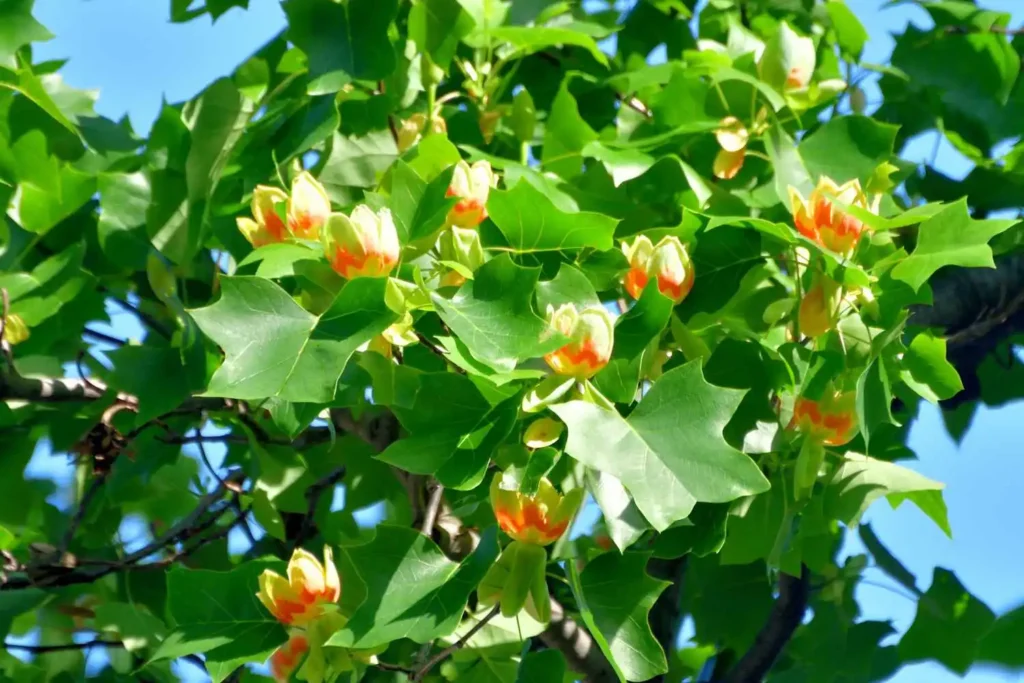
7 Vegetables to Plant in December for a Bountiful Winter Harvest
Winter gardening is a challenge many new gardeners shy away from. But if you’re among [...]
Dec
9 Common Christmas Cactus Problems and How to Fix Them
Have you ever walked past your Christmas cactus and wondered why it suddenly looks sad? [...]
Nov
Swedish Ivy Care: How to Grow a Healthy, Thriving Plant
Have you ever looked at your Swedish Ivy and wondered why the leaves are turning [...]
Nov
Avoid These 10 Garlic Planting Mistakes for Bigger, Healthier Bulbs
Growing garlic at home is one of the most satisfying things a gardener can do [...]
Nov
How to Prevent Christmas Cactus Bud Drop: Tips for a Healthy Bloom
Have you ever noticed your beautiful Christmas cactus (Schlumbergera) starting to lose its buds just [...]
Nov
Discover 7 Stunning Types of Night-Blooming Cereus
Have you ever waited for a flower that only opens at night and then disappears [...]
Nov